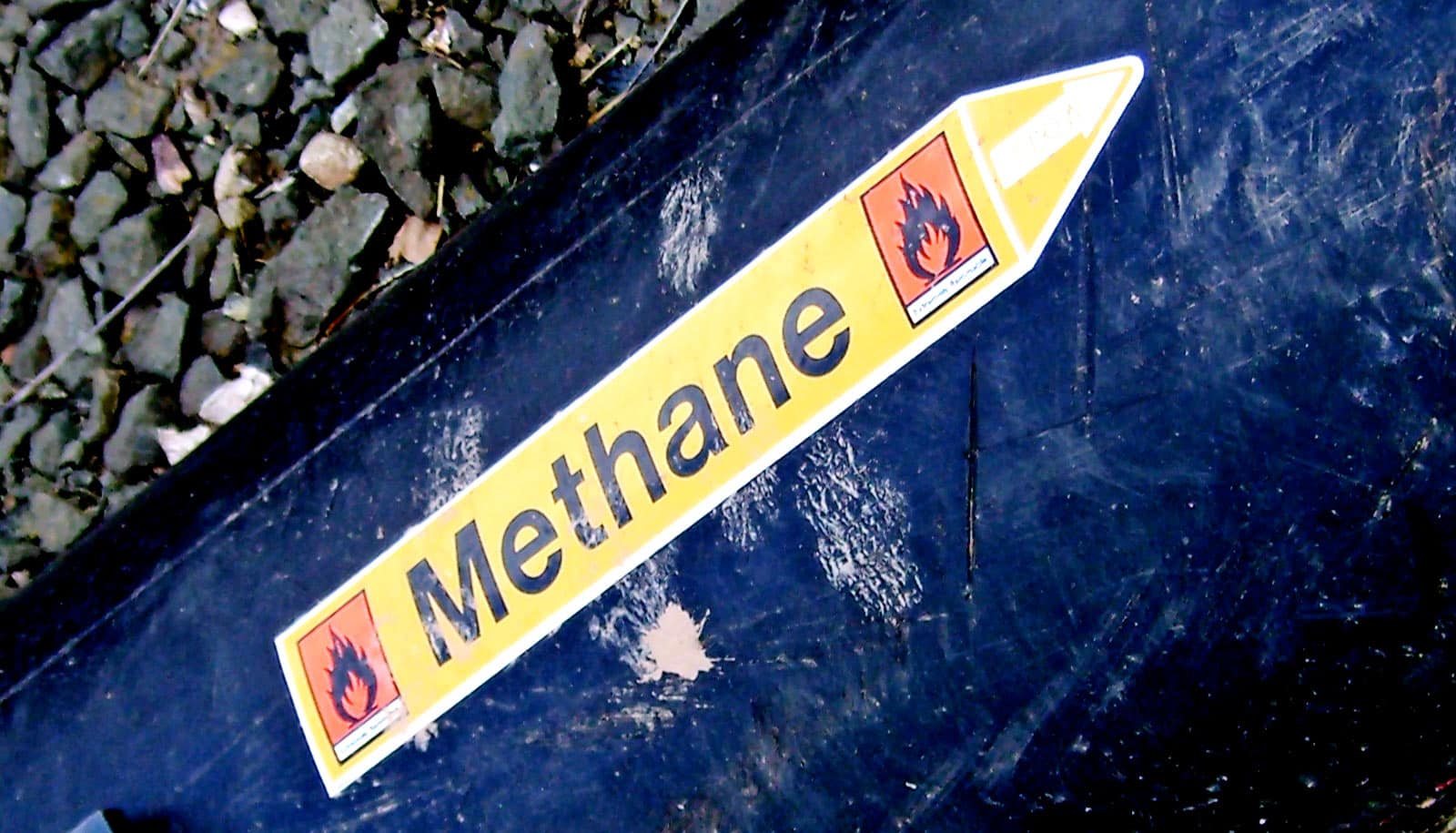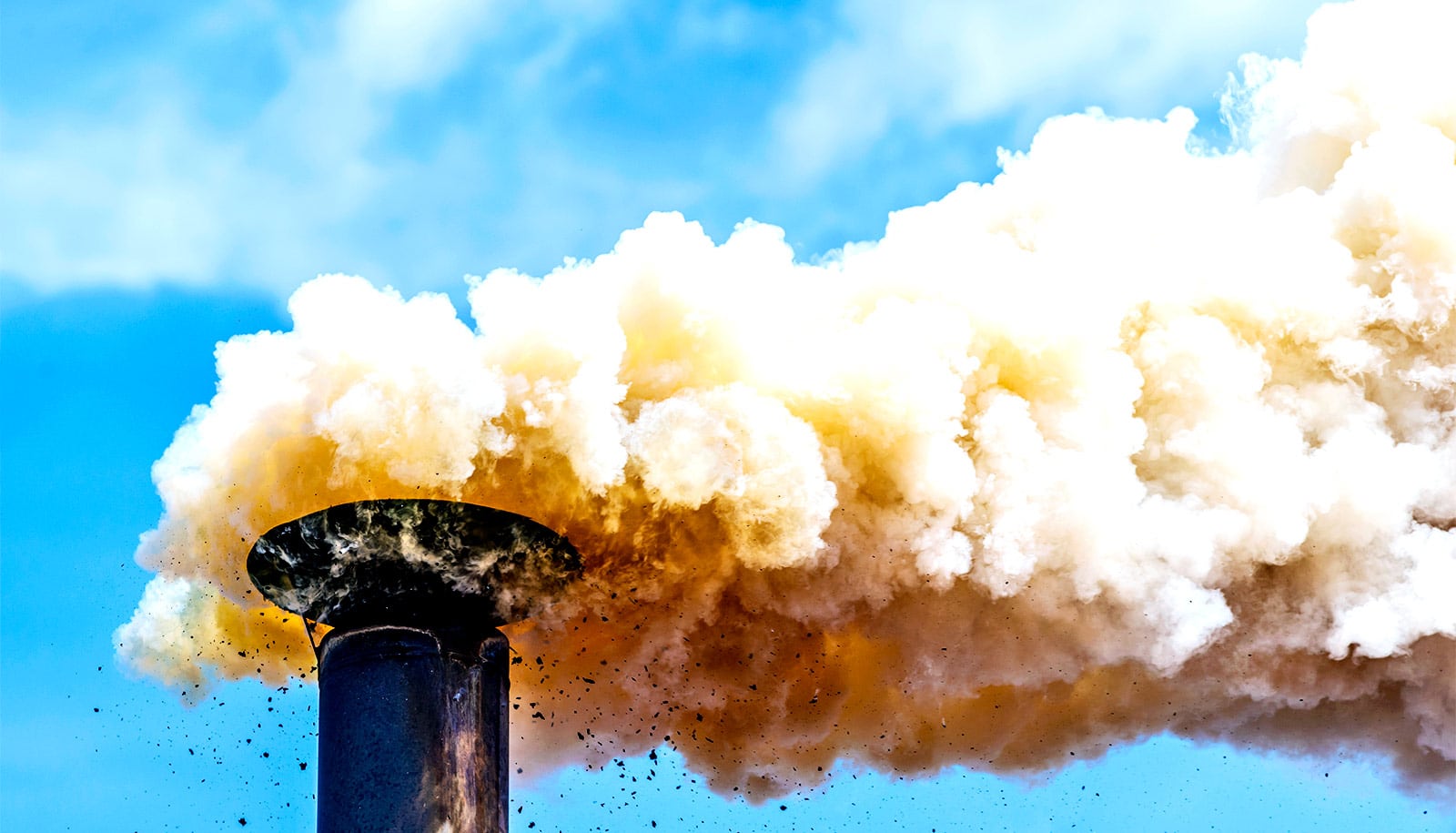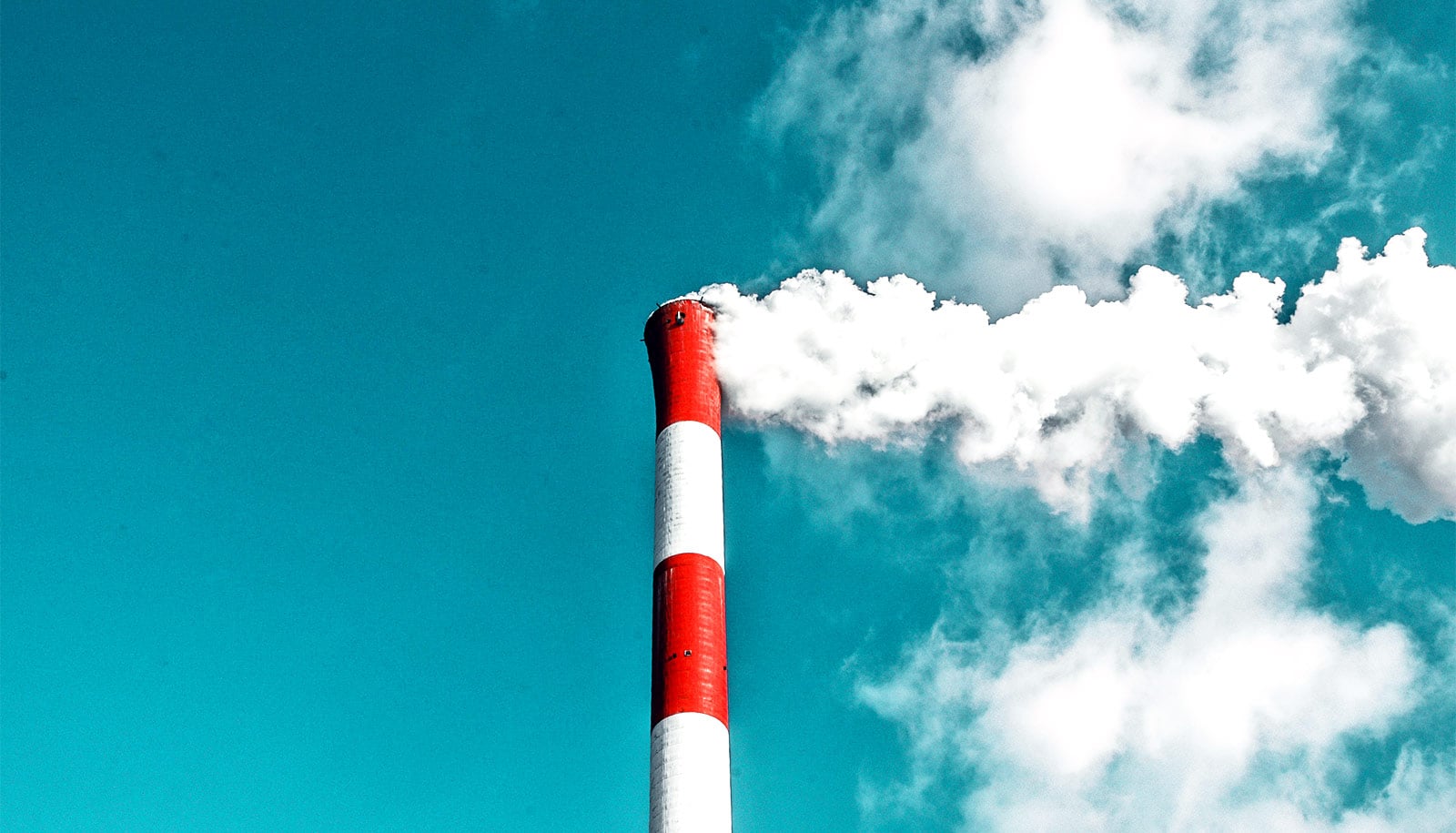Global emissions of methane have reached the highest levels on record, research shows.
Growth of emissions from coal mining, oil and natural gas production, cattle and sheep ranching, and landfills are primarily driving the increases.
Between 2000 and 2017, levels of the potent greenhouse gas barreled up toward pathways that climate models suggest will lead to 3-4 degrees Celsius of warming before the end of this century.
This 3D volumetric visualization shows the emission and transport of atmospheric methane around the globe between December 9, 2017 and December 1, 2018.
This is a dangerous temperature threshold at which scientists warn that natural disasters, including wildfires, droughts, and floods, and social disruptions such as famines and mass migrations become almost commonplace.
The findings appear in two papers in Earth System Science Data and Environmental Research Letters.
In 2017, the last year when complete global methane data are available, Earth’s atmosphere absorbed nearly 600 million tons of the colorless, odorless gas that is 28 times more powerful than carbon dioxide at trapping heat over a 100-year span.
“People joke about burping cows without realizing how big the source really is.”
More than half of all methane emissions now come from human activities. Annual methane emissions are up 9%, or 50 million tons per year, from the early 2000s, when methane concentrations in the atmosphere were relatively stable.
In terms of warming potential, adding this much extra methane to the atmosphere since 2000 is akin to putting 350 million more cars on the world’s roads or doubling the total emissions of Germany or France.
“We still haven’t turned the corner on methane,” says Rob Jackson., a professor of earth system science in Stanford University’s School of Earth, Energy & Environmental Sciences (Stanford Earth) as well as leader of the Global Carbon Project.
More methane
Globally, fossil fuel sources and cows are twin engines powering methane’s upward climb.
“Emissions from cattle and other ruminants are almost as large as those from the fossil fuel industry for methane,” Jackson says. “People joke about burping cows without realizing how big the source really is.”
Throughout the study period, agriculture accounted for roughly two-thirds of all methane emissions related to human activities; fossil fuels contributed most of the remaining third. However, those two sources have contributed in roughly equal measure to the increases seen since the early 2000s.

Methane emissions from agriculture rose to 227 million tons of methane in 2017, up nearly 11% from the 2000–2006 average. Methane from fossil fuel production and use reached 108 million tons in 2017, up nearly 15% from the earlier period.
Amid the coronavirus pandemic, carbon emissions plummeted as manufacturing and transportation ground to a halt. “There’s no chance that methane emissions dropped as much as carbon dioxide emissions because of the virus,” Jackson says. “We’re still heating our homes and buildings, and agriculture keeps growing.”
Emissions worldwide
Methane emissions rose most sharply in Africa and the Middle East; China; and South Asia and Oceania, which includes Australia and many Pacific islands. Each of these three regions increased emissions by an estimated 10 to 15 million tons per year during the study period. The United States followed close behind, increasing methane emissions by 4.5 million tons, mostly due to more natural gas drilling, distribution, and consumption.
“We’ll need to eat less meat and reduce emissions associated with cattle and rice farming, and replace oil and natural gas in our cars and homes.”
“Natural gas use is rising quickly here in the US and globally,” Jackson says. “It’s offsetting coal in the electricity sector and reducing carbon dioxide emissions, but increasing methane emissions in that sector.”
The US and Canada are also producing more natural gas. “As a result, we’re emitting more methane from oil and gas wells and leaky pipelines,” says Jackson, who is also a senior fellow at Stanford’s Woods Institute for the Environment and Precourt Institute for Energy.
Europe stands out as the only region where methane emissions have decreased over the last two decades, in part by tamping down emissions from chemical manufacturing and growing food more efficiently.
“Policies and better management have reduced emissions from landfills, manure, and other sources here in Europe. People are also eating less beef and more poultry and fish,” says Marielle Saunois of the Université de Versailles Saint-Quentin in France, lead author of the paper in Earth System Science Data.
What can the world do?
Tropical and temperate regions have seen the biggest jump in methane emissions. Boreal and polar systems have played a lesser role. Despite fears that melting in the Arctic may unlock a burst of methane from thawing permafrost, the researchers found no evidence for increasing methane emissions in the Arctic—at least through 2017.
Human driven emissions are in many ways easier to pin down than those from natural sources. “We have a surprisingly difficult time identifying where methane is emitted in the tropics and elsewhere because of daily to seasonal changes in how waterlogged soils are,” says Jackson.
According to the researchers, curbing methane emissions will require reducing fossil fuel use and controlling fugitive emissions such as leaks from pipelines and wells, as well as changes to the way we feed cattle, grow rice, and eat.
“We’ll need to eat less meat and reduce emissions associated with cattle and rice farming,” Jackson says, “and replace oil and natural gas in our cars and homes.”
Feed supplements such as algae may help to reduce methane burps from cows, and rice farming can transition away from permanent waterlogging that maximizes methane production in low-oxygen environments. Aircraft, drones, and satellites show promise for monitoring methane from oil and gas wells.
Jackson says, “I’m optimistic that, in the next five years, we’ll make real progress in that area.”
Additional coauthors of the paper in Environmental Research Letters are from Laboratoire des Sciences du Climat et de l’Environnement at Université Paris-Saclay; the Commonwealth Scientific and Industrial Research Organization (CSIRO) in Canberra, Australia; the NASA Goddard Space Flight Center; the European Commission Joint Research Centre; the Center for Global Environmental Research at the National Institute for Environmental Studies and the Meteorological Research Institute in Ibaraki, Japan; the TNO Department of Climate Air & Sustainability in Utrecht, The Netherlands; and the Finnish Meteorological Institute in Helsinki, Finland.
Support for the research came from the Gordon and Betty Moore Foundation, Stanford University, the Australian Government’s National Environmental Science Programme’s Earth Systems and Climate Change Hub (JGC), and Future Earth.
Source: Stanford University



